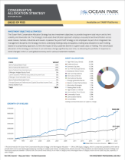There is extensive coverage in the financial press regarding the “income” that retirees supposedly need, or can safely take from their savings on an annual basis. Importantly, there is also heavy emphasis in the financial press about the difficulty of obtaining sufficient “income” from retirement investments in the current environment, during which the Federal Reserve has “repressed” interest rates on certificates of deposit, Treasury bills and related interest-bearing investments, upon which many retirees have traditionally relied.
The thesis of this paper is to suggest that Financial Advisors and their clients should change their focus (and language), to recognize that what retirees actually need is cash flow, not “income”.
The word “income” has various meanings, which tends to cause confusion. For an accountant, for example, the term “income” tends to connote flows that are taxable at “ordinary income” rates. In the corporate world also, the word “income” is ambiguous, since it is sometimes used to refer to revenue, but also is included in the important term “net income”, meaning corporate profit after expenses. And sometimes the financial press rather loosely uses the word “income” when writing about the total return performance of a portfolio.
Let us now demonstrate a better way to think about what retirees really need, which will greatly simplify the task of any Financial Advisor who currently attempts to tailor client portfolios one-by-one to accommodate the stated “income” need of each individual client – a daunting task in the current environment.
At Ocean Park, our managed accounts are invested in mutual funds, and the distributions of dividends and capital gains from the underlying investments are automatically reinvested. Thus, we do not rely on portfolio income to provide the cash flow needed by each client.
Instead, we instruct our custodian (TD Ameritrade) as needed to sell a specified amount of one underlying portfolio assets, in the event our accounts are fully invested, sufficient to fund the specified cash flow need of each client.
Each client can specify the recurrent amount that they need each month, which TD Ameritrade wires directly into their checking account, either on the middle or at the end of the month.
Our operations staff has identified those clients who take mid-month distributions, and those who take end-of-month distributions, in the amount of cash flow needed by each.
Thus, as the middle or end of each month approaches (and assuming our accounts are fully invested), our Operations staff asks the portfolio managers which portfolio holding(s) should be slightly reduced in order to generate the cash needed to fund the upcoming distributions.
Benefits: As you can see, the described approach eliminates any need for us to tailor each portfolio to try to generate the amount of cash flow needed by each client from portfolio-holding distributions alone.
Instead, we are able to manage for Total Return (the sum of portfolio income and capital gains/losses) and risk tolerance. Our client accounts can be grouped according to risk tolerance, rather than cash flow needs, and our investment tactics can be much more effectively focused on generating the best overall returns that we can achieve.
We hope this is paper will be of benefit to you, and to your clients. We have had no difficulty in serving the cash flow needs of our many retired clients by using this approach over the past 28 years.

